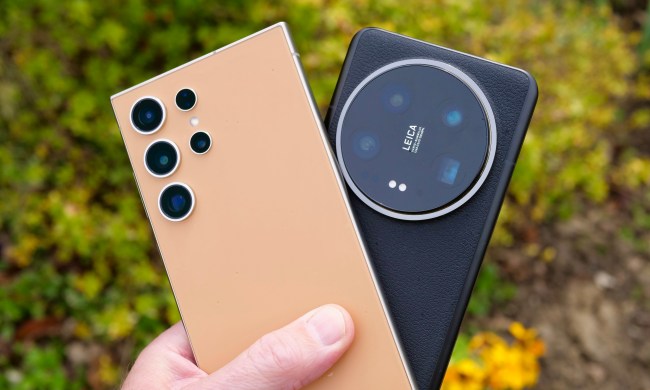Cameras, including phones, shoot JPEGs by default, but this compressed format saves a fraction of the data your camera’s sensor is capable of recording. The alternative is to shoot in RAW, a filetype that maintains all of the original data from the sensor. Used more by pros and serious photo enthusiasts, RAW has many advantages, like increased flexibility for editing, along with a few disadvantages, like larger file size.

What is a RAW file?
Technically, RAW isn’t actually a file type. There are many file types for different RAW formats, like Adobe DNG, Nikon NEF, and Fujifilm RAF. Only programs that specifically support these file types will be able to decode and display them, but if the RAW file type from your camera is incompatible with your image editing software, you can convert the file to a DNG using Adobe’s free DNG Converter. There are many mobile apps that support RAW as well, such as VSCO and Snapseed.
RAW is often called a digital negative, because, like the negatives in film photography, a RAW file isn’t yet fully developed. Digital cameras take data from the sensor and process it into a useable file. A RAW file is minimally processed, whereas a JPEG is fully processed, with much of the information “baked” into it, such as white balance and a color profile.
RAW files are uncompressed (or may offer relatively slight compression) and allow you to make many more changes in post, including the color profile, white balance, and exposure. Essentially, for a RAW photograph, you are the processor, not the camera. You can decide to edit an image to reflect the scene as accurately as possible, to imitate the look of a specific film, or to invent your own style. The possibilities are endless.
By contrast, if you try to alter a JPEG file too much, image quality will degrade. However, straight from the camera, a JPEG may actually look better than a RAW. That’s because the RAW file has not been edited, while the JPEG was automatically edited by your camera.
A RAW photo can often look a little flat right from the camera, but don’t let that scare you away. Many editing programs let you apply a color profile in a single click, or even automatically when importing the RAW file, which will instantly make the image look better while maintaining all the flexibility of the RAW file. (Here’s how to adjust that color profile in Lightroom Classic.)
- 1. Unedited RAW
- 2. Edited RAW
Disadvantages of RAW
Because a RAW photo is uncompressed and unprocessed, it carries a few disadvantages.
First, JPEG is a universal format that can be immediately opened on any image program regardless of the camera that shot it. Because RAW is unprocessed, you can’t just share an untouched file. At the very least, a RAW photo needs to be converted into a more universal and web-friendly format, such as a JPEG.
That’s right, even if you shoot RAW, the end result will likely still be a JPEG — but that JPEG will be made after your edits to the RAW file, with little degradation in quality at that point. But if you need to shoot and share as quickly as possible, JPEG is more appropriate.
RAW files are also larger than JPEGs and will fill your memory card and hard drive much faster. They will also take longer to transfer from the memory card to a computer.
This can also impact in-camera performance. In continuous shooting, a camera will be able to capture more JPEGs in a row because the file sizes are smaller. While high-end cameras generally have large image buffers that can store plenty of RAW files, budget-oriented models may only be able to fit 15 or 20 in a single burst. For sports and action photography, JPEG may simply be the safer bet, allowing you to capture more pictures in a row and increasing the chance that you nail the perfect moment.
In phones, a RAW file won’t offer any of the advanced artificial intelligence features of the native camera app, like Google’s Night Sight or Apple’s semantic rendering. This means, again, that a JPEG may be the better-looking image, but it still won’t let you edit it to match your own style like a RAW file will.
How to shoot in RAW
Most dedicated cameras and even smartphones now offer the option to shoot in RAW. In a camera, you’ll find it in the image quality settings, but keep in mind this option may not be available in fully automatic mode, or in “scene” modes (which often require in-camera processing, and are therefore incompatible with RAW). On a smartphone, you will probably need a third-party app to unlock the RAW setting.
Another option is to select RAW + JPEG. This setting takes both a RAW photo and a JPEG of the same image. Yes, the memory card will fill up even faster, but if you want to quickly share an image and have one to edit later, RAW + JPEG is the way to go. In cameras with two memory card slots, you can even save JPEGs to one and RAWs to the other.
Other than the potential performance limitations, shooting in RAW won’t look or feel any different than shooting in JPEG. In fact, the preview you see on your camera’s LCD screen will look identical — it’s only once you open the files in editing software that the differences will become clear.
Shooting RAW can result in a better, more polished final image. But when you need the most speed, don’t have time to edit, or need to maximize the available space on your memory card, JPEG will suffice.





